Migrating from one server version to another is not a trivial task as there are typically no easy ways to simply upgrade. For all practical purposes it is a new install with the added complication of having to deal with existing data and structures. As always, make sure you have a backup copy of your data before you start in the event you run into issues. Below are the steps I followed and certainly not the only way to do things. As a matter of fact it may not be the best way depending on circumstances. Also, I documented this specifically for moving from WHS 2011 to Windows Server 2012 Essentials R2. Moving form V1 would be handled very differently due to the storage pool.
Existing Install
Along with backing up your data, also make sure you back up your OS in case things turn squirrely and you need to restore your old configuration. After you back everything up, go through your add ins and any installed software and release any licenses so you can reuse them on your new install. For example, in older versions of Cloudberry, you have to manually release the license before you can install it in another system/OS. Remember to download all the current versions to use with your new install to minimize compatibility concerns.
- Take a screen capture or make a list of all users in your server to simplify the new setup.
- Take a snapshot of all your shares, again to simplify recreating the same structure after you install the new OS. If you are like me, the number of shares has grown over the years.
- ***IMPORTANT*** Make sure you are logged in as the administrator and from the file manager, rename all occurrences of “ServerFolders” to “ServerFolders-Original”. Repeat this if you have locations on different drives. You may be forced to reboot first before you can rename this folder. This step is critical as it is done to prevent accidental data deletion when reinstalling the new OS and recreating the shares. Again, make SURE there are no shares or data on any portion of the primary physical drive, if they are you will have to move them. This is critical to protect your data.
- Now that you have backed everything up including your OS, it is time to move on to the new install. I chose to install on a fresh drive and preserve my old system drive but that is completely up to you. I have always followed this practice especially with SSD’s.
New OS Install
Install the new OS (Windows Server 2012 Essentials) on your new or existing drive. Remember all data on the primary drive will be lost. Once you have completed the new install, you need to perform the following steps before you do too much else. Server Essentials will have to have an active network connection before it will finish the install. One easy way to deal with a new motherboard that may not have native drivers is to use an old Intel or Realtec NIC card and complete the install as those are typically automatically detected without the use of external drivers.
- Check the device manager and see if there are any unrecognized devices listed. If there are, install the appropriate drivers. Always download the latest version of the driver. In some cases such as with mine, I had to install the chipset drivers, the ME drivers from Intel, and some secondary device drivers in order to get everything working correctly. You may also need to download some LAN drivers for your internal NIC card.
- Once you have that done, and your device manager is good to go, run windows update and install all the critical updates.
Though the next steps can be done in different ways, this is the way I usually do them
- Re-create all the users that you had in the old system with proper permissions.
- “Move the default shares created with your new installations such as backup locations, users, etc., to the drive you want to use. Remember all you directories will be empty as your data is still safely tucked away in the renamed folder you did in an earlier step.
- Begin to recreate all your shares the way you had them on your old system. Remember you are creating “empty shares” that you will copy the data from the renamed folder to these new shares so for now create them all.
Populating Your Data
- This is the most important part. Now that your shares are created, go into the file manger and begin to move your data from the old “ServerFolders-Original” to the newly created shares which should be empty. Caution, do this step slowly as to avoid data loss and if you have the room, copy first, verify it is there, then delete the version from the original folder. If you have plenty of space, leave the old copy there until you verify everything is working.
- Repeat this for each share until you have completed and verified. Once you have moved all the data over and you are convinced it is all there, you can delete the original folder.
Additional Server Tasks
- Reinstall and reconfigure any software/add-ins you may want on the new OS. Only install what you need to avoid the potential of conflicts. My approach is to start with a couple of the critical ones such as Cloudberry or CrashPlan and run the system for awhile, then add the balance once you are comfortable everything is working.
Clients
Assuming you had a home server before, you now have to go to each of the clients and remove the old connector software. (If you had previously connected the client to a domain controller, and you plan on using the work around that allows you to install the connector without joining the domain, then it may be required to open the registry and search for “Windows Server” and delete all the keys that contain that string). I recommend making a backup of the registry before doing this if you are not familiar with the registry. For details on this work around visit tinkertry.com. Repeat for each client you are going to install. For my install I used this work around and got fantastic results. Once you have removed the existing connector software (and cleaned the registry if required) install the new connector software. Again reference the tinkertry instructions if you are going to domain skip.
Additional Steps
Based on your setup, you may have to perform some other tasks to complete your setup.
- Configure any devices such as HTPC’s or desktop boxes that use your network shares and point them to the new server location.
- Also configure things like Plex, Air Video, and MyMovies to point to the correct locations on your new server.
- Verify your cloud backup software is setup and working correctly and make sure that you configure your server backups
- Verify all the clients are backing up correctly.
Summary
At the end of the task, the process took me about 6 hours to complete from start to finish including installing a new SSD as I wanted to preserve the old setup in case this did not work out. When I first started to plan, I figured it would be a 2 hour job but as it turns out sometimes, things take a bit longer thank you originally think. Some of the time was spent experimenting with the domain skip process and finding out that I had to delete some old registry settings for things to work correctly. Now that is done and I have worked out the bugs, I am impressed with the new setup and I am glad I finally made the switch. If you ask me if I would recommend switching from WHS 2011 to Windows Server 2012 Essentials R2, the answer would be tough. If your needs to go beyond 2T and are supporting a wide variety of devices that use EFI and GPT partitions than the answer would be yes. If you needs are a bit more modest, than WHS 2011 should work out for a long time to come. Considering the trend with new laptops, tablets, and desktops though, as well the growing storage needs, my guess is the need to switch will come sooner rather than later.
Final Hardware Configuration
Main Server (74 Watts at idle)
Core I5 – 4570S Haswell
Asus Z87M-Plus
16 Gigs of DDR3
1 x 128 Gig Samsung 840 Pro SSD
Highpoint 2720 SGL RAID Controller
5 x 3T Seagate ST3000DM001 (RAID 5)
2 x 2T WD EARS drives in mirror
1 x 2T WD EARS for Backup
Cooler Master 700W
Windows Server 2012 Essentials

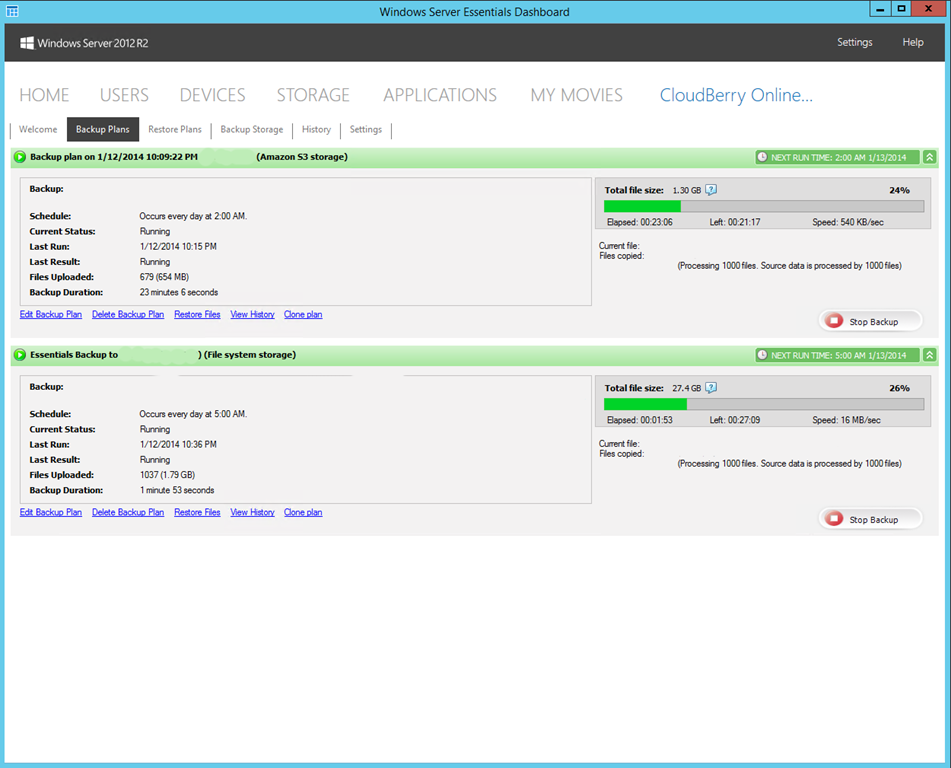

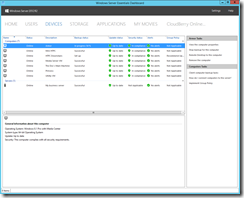
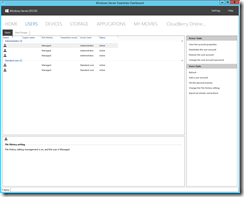
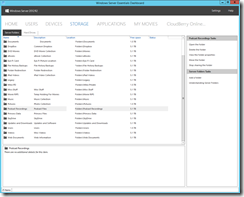

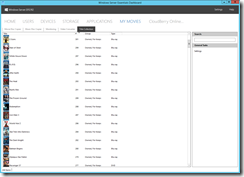
[…] A nice write up which you can find here. […]
[…] Windows Server Essentials R2 a few months ago and documented my migration plan on an earlier post (see here for the post). As it turns out I ran into a few self induced issues shortly after creating that post forcing […]
I am about to move from 2012 Essentials to R2. I like you and Paul B do not use the AD and installed with the “SkipDomainJoin”. From this article it appears that apart from uninstalling the connectors on my clients I may have to change something else in the registries before rejoining with “SkipDomainJoin” and then changing “SkipAutoDNSServerDetection” to True.